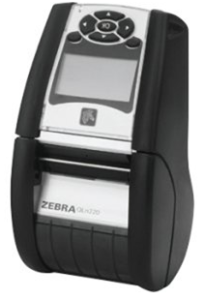Barcoding Yields 593% Reduction in Specimen Mislabeling
 (Guest post by Rad DeRose - L-Tron Corp). I wrote recently about the importance of establishing reliable patient- and specimen-identification protocols and of then following them. That last part, actually following established protocol, may seem too obvious to waste space here saying, but my research revealed that simply failure to follow established procedures is indeed a leading, if not the leading, cause of sample misidentification. More than 160,000 adverse events occur in the U.S. each year, and more than 55 percent of those relate directly to specimen mislabeling.
(Guest post by Rad DeRose - L-Tron Corp). I wrote recently about the importance of establishing reliable patient- and specimen-identification protocols and of then following them. That last part, actually following established protocol, may seem too obvious to waste space here saying, but my research revealed that simply failure to follow established procedures is indeed a leading, if not the leading, cause of sample misidentification. More than 160,000 adverse events occur in the U.S. each year, and more than 55 percent of those relate directly to specimen mislabeling.
The Pennsylvania Patient Safety Advisory (PPSA) was established in 2002 to address the growing problem of medical errors in that state. Indeed, Pennsylvania was the first state in the union to institute comprehensive reporting of “adverse events and near-miss incidents.” From August of 2009 through October of 2010, the PPSA conducted collaborative blood specimen-labeling analysis of healthcare facilities within the state. A 2011 report produced for the Pennsylvania Patient Safety Advisory, entitled Reducing Errors in Blood Specimen Labeling: A Multihospital Initiative, analyzed 485 incident investigations and concluded that of the 520 factors reported as contributing to those incidents, 256 of those 520 factors – 49% – involved simple failure to follow established labeling procedures. In second place was “distractions” and “interruptions” at 70.
 A 2012 review published in the journal, Clinical Biochemistry, entitled Effectiveness of barcoding for reducing patient specimen and laboratory testing identification errors: A Laboratory Medicine Best Practices systematic review and meta-analysis, is revealing. Of the seven studies of before/after introduction of barcoding systems, effectiveness of those improvements were reported as 257%, 1295%, 658%, 367%, 527%, 170% and 268%. With respect to point-of-care test barcoding, the improvements were as impressive: 1472%, 475%, 594%, 385%, 523%, 375% and 609%. The review concludes:
A 2012 review published in the journal, Clinical Biochemistry, entitled Effectiveness of barcoding for reducing patient specimen and laboratory testing identification errors: A Laboratory Medicine Best Practices systematic review and meta-analysis, is revealing. Of the seven studies of before/after introduction of barcoding systems, effectiveness of those improvements were reported as 257%, 1295%, 658%, 367%, 527%, 170% and 268%. With respect to point-of-care test barcoding, the improvements were as impressive: 1472%, 475%, 594%, 385%, 523%, 375% and 609%. The review concludes:
“Barcoding systems for specimen labeling and point-of-care test barcoding are recommended as best practices to reduce identification errors and improve the accuracy of patient specimen and laboratory testing identification in hospital settings. The meta-analysis overall summary effect mean odds ratio favoring barcoding is 4.30 (95% confidence interval: 3.05-6.32) for barcoding systems and 5.93 (95% confidence interval: 5.28-6.67) for point-of-care test barcoding.”
When it comes to patient-specimen labeling, barcode-based protocols work. Zebra Technologies’ lightweight QLn220 mobile printer is specifically designed to facilitate systematic labeling of patient specimen where labeling is most effective: at the bedside where misidentification of the patient and patient sample are least likely to occur.
The Pennsylvania study revealed that 49% of labeling errors resulted from failure to follow basic labeling procedures. Busy healthcare professionals cannot be expected to comply with labeling procedures unless those protocol are as user-friendly as they are strict, and the lightweight, always-at-hand QLn220 mobile label printer is the definition of user-friendly.
Written by RAD DeRose
About RAD DeRose and L-Tron Corporation
RAD DeRose is the president of L-Tron Corporation, a value added solution provider founded in 1975. They were awarded Best Vendor for three years by Carestream Health, and were named a Carestream Health Certified Supplier and a Rochester Top 100 Company in 2011.
Other Articles You May Enjoy:
Follow Us on Twitter - https://www.twitter.com/TheBarcodeNews
